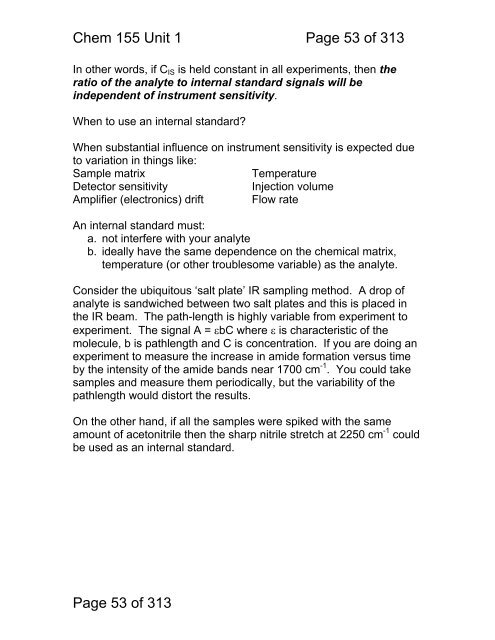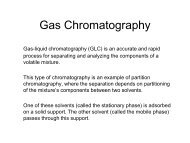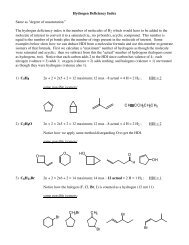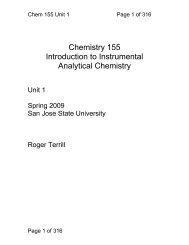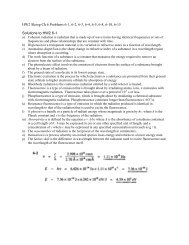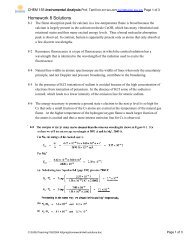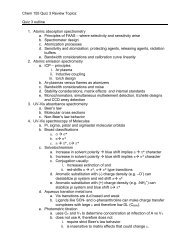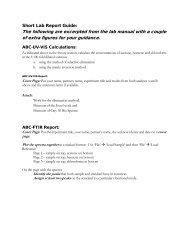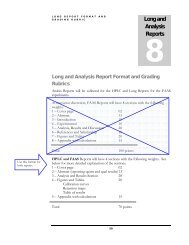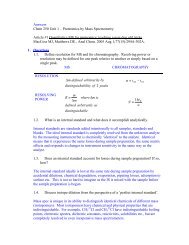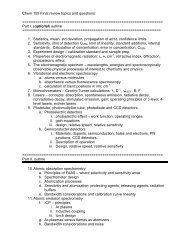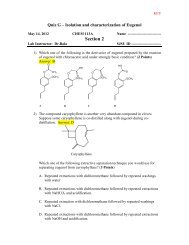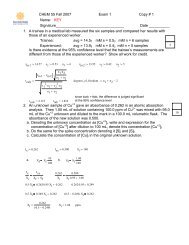Chemistry 155 Introduction to Instrumental Analytical Chemistry
Chemistry 155 Introduction to Instrumental Analytical Chemistry
Chemistry 155 Introduction to Instrumental Analytical Chemistry
Create successful ePaper yourself
Turn your PDF publications into a flip-book with our unique Google optimized e-Paper software.
Chem <strong>155</strong> Unit 1 Page 53 of 313In other words, if C IS is held constant in all experiments, then theratio of the analyte <strong>to</strong> internal standard signals will beindependent of instrument sensitivity.When <strong>to</strong> use an internal standard?When substantial influence on instrument sensitivity is expected due<strong>to</strong> variation in things like:Sample matrixTemperatureDetec<strong>to</strong>r sensitivityInjection volumeAmplifier (electronics) drift Flow rateAn internal standard must:a. not interfere with your analyteb. ideally have the same dependence on the chemical matrix,temperature (or other troublesome variable) as the analyte.Consider the ubiqui<strong>to</strong>us ‘salt plate’ IR sampling method. A drop ofanalyte is sandwiched between two salt plates and this is placed inthe IR beam. The path-length is highly variable from experiment <strong>to</strong>experiment. The signal A = εbC where ε is characteristic of themolecule, b is pathlength and C is concentration. If you are doing anexperiment <strong>to</strong> measure the increase in amide formation versus timeby the intensity of the amide bands near 1700 cm -1 . You could takesamples and measure them periodically, but the variability of thepathlength would dis<strong>to</strong>rt the results.On the other hand, if all the samples were spiked with the sameamount of ace<strong>to</strong>nitrile then the sharp nitrile stretch at 2250 cm -1 couldbe used as an internal standard.Page 53 of 313


